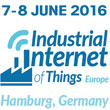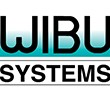
North America’s First Antenna & RF Design Center for M2M and IoT Devices

The Internet of Things (IoT) has truly begun to take off with enabled devices including smart watches, smart meters and connected cars as well as smartphones and tablets, writes David Watkins, the service delivery director at Virtus Data Centres. However, technology and appliances are not the only industries affected by this growing trend. In fact, IoT’s potential reaches far beyond, and could play a major role in helping disconnected industries re-engage with their customers. (more…)
Posted by: George Malim

February 2, 2016
Posted by: George Malim

Event date: June 7 – 8, 2016
Hamburg, Germany
The Industrial IoT promises to generate a new wave of technological innovation that is set to permanently redefine the current digital landscape.
Pioneering businesses are connecting complex, physical machines with first-class analytics to unleash a wealth of new insights that were never before possible. (more…)
February 1, 2016
Posted by: IoT global network

Application context and security requirement
A leading manufacturer of electrical systems for railways wanted to protect their know-how invested in their so ware against counterfeiting, reverse engineering, and tampering. Wibu developed a technology – CodeMeter® Embedded – protecting the integrity of the machine code.
Challenge
The vendor manufactures a real-time controller for the electric power system of trains. The unit is therefore used in harsh conditions with public safety implications. Even though it employs failsafes, a power outage can cause inconvenience for passengers, and could lead to delays across the entire network, and cause other safety concerns. The challenge is not just building a robust controlling so ware for the power converter system, but also making sure it stays secure from local and remote cyber-attacks.
January 27, 2016
Posted by: Wibu-Systems USA, Inc.

Andreas Schierenbeck, the chief executive of thyssenKrupp Elevator, discusses how modern IoT developments are bringing one of the world’s oldest industries – construction – into the 21st century. (more…)
Posted by: George Malim

Virtual Reality (VR) is closing the final gap before it becomes an accessible and comfortable consumer experience, writes Matthew Duke-Woolley, an analyst at Beecham Research. (more…)
Posted by: George Malim

Internet connected devices are becoming embedded in our everyday lives, with almost every object either already connected or currently being modified in an attempt to be smart, writes Grayson Milbourne, the security intelligence director at Webroot. (more…)
January 26, 2016
Posted by: George Malim

Smart home and consumer applications in the Internet of Things (IoT) are seen as huge growth markets. Numerous related products and solutions already exist today however, although these solutions achieve enormous comfort and security gains as well as energy savings, an important component is missing: the user acceptance. The convergence of standards and technologies resulting in seamlessly connected, worldwide solutions will change this situation, write Graham Martin, the chairman of the EnOcean Alliance, and Tobin Richardson, the resident and CEO of the ZigBee Alliance. (more…)
January 25, 2016
Posted by: George Malim

Practical Lessons From Building An IoT Proof-of-Concept
What looks simple from 20,000 feet becomes complex as you get closer to the ground. Here are details on the approach we used, components we used and the lessons we learnt while recently developing an IoT proof-of-concept. (more…)
January 22, 2016
Posted by: Skilled Analysts